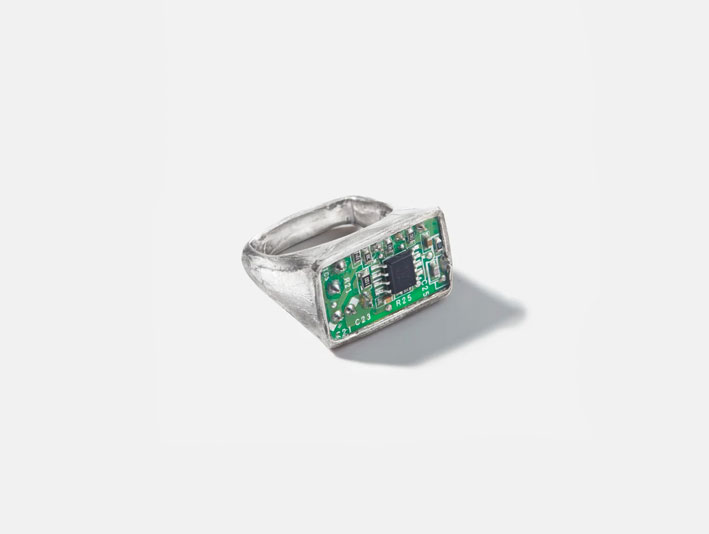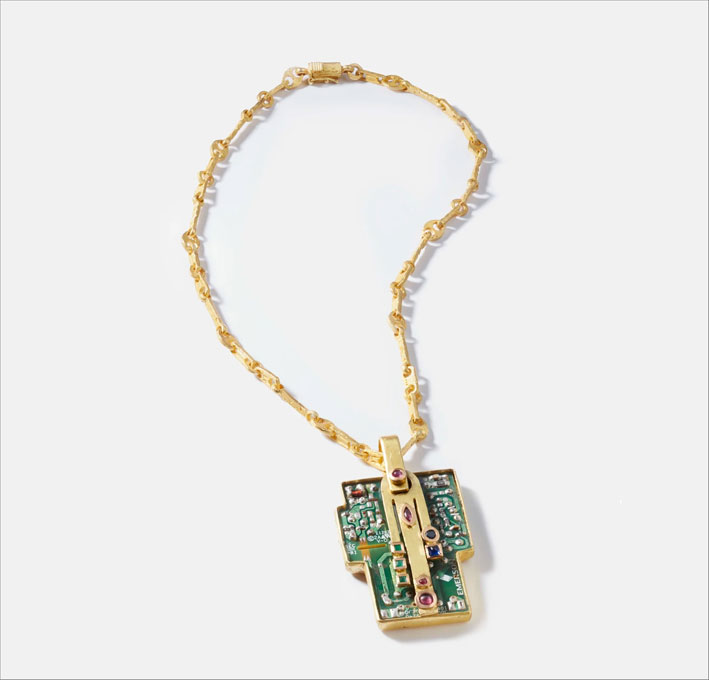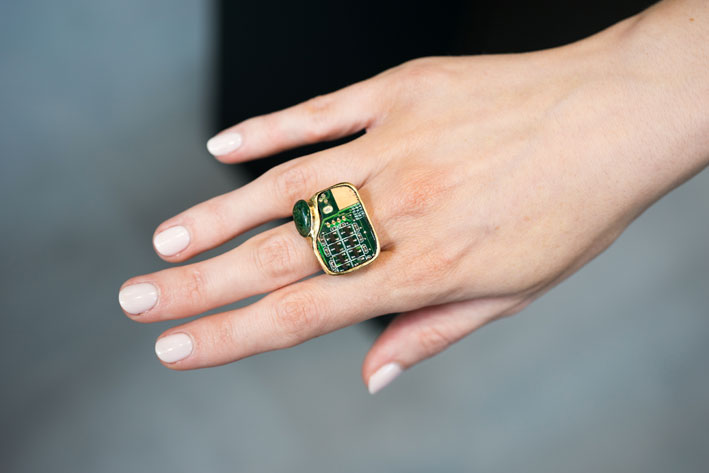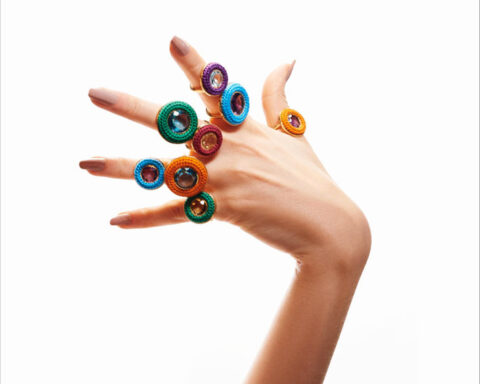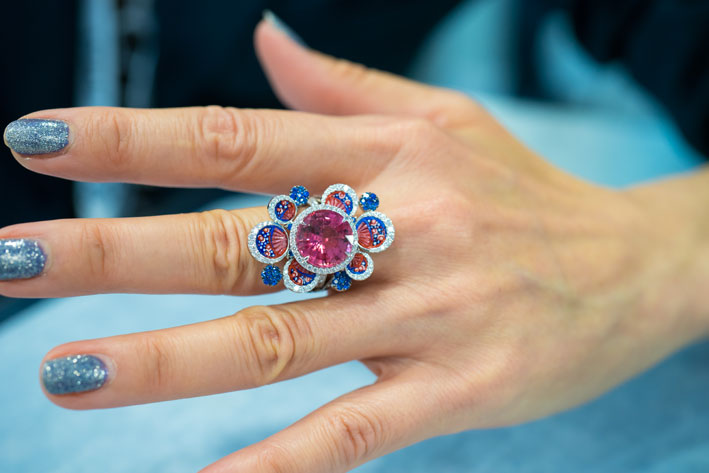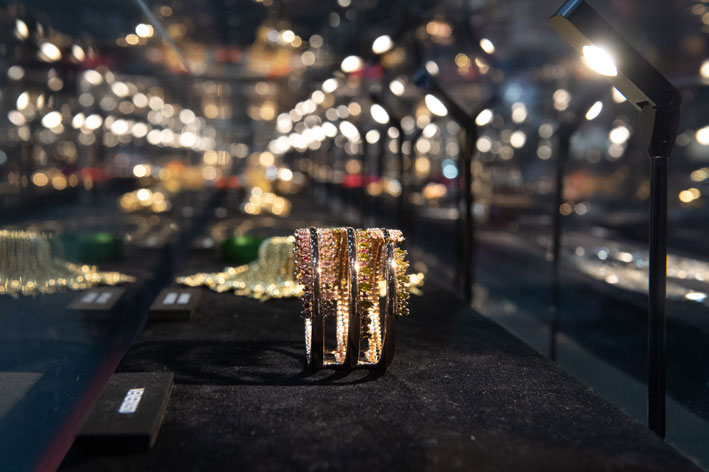Sustainability and technology: two words that are part of everyone’s life but which, rarely, also become part of the world of jewelry. Bringing the two concepts together is a newborn brand Oushaba. The idea is to bring into jewelry both fragments of that technology that everyone uses on a daily basis, and the need to focus on a circular economy. This intention translates into jewels that are made through the design of basic electronic elements, such as the transistor boards that form the heart of smartphones or computers. Materials that have a fast obsolescence but which, according to Oushaba, can be transformed into rings or pendants. The first collection is called, precisely, Connection Salvaged.
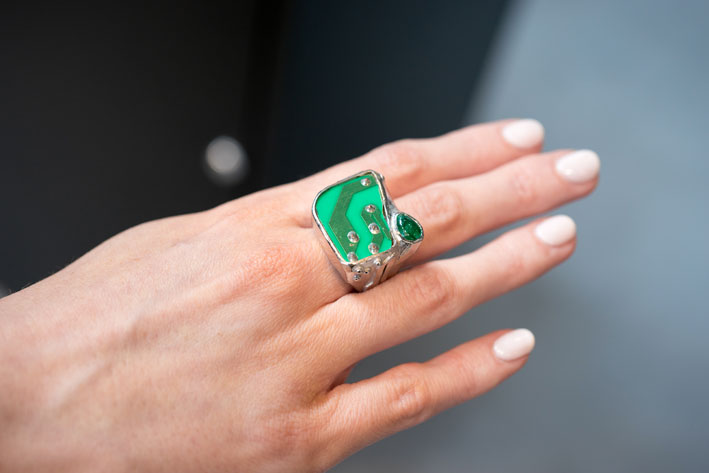
Cards, charging cables, USB sticks find new life set in 22-karat recycled gold, 18-karat white gold and silver. Gems are added to this basic material: diamonds, rubies, emeralds and sapphires, always from sustainable sources. The jewels, for now, are produced on commission in a limited edition, waiting to find out the answer. The Maison, directed by Gillian Carr, chose the Arabic name Oushaba, which means alloy and indicates a cultural fusion of ideas and influences.
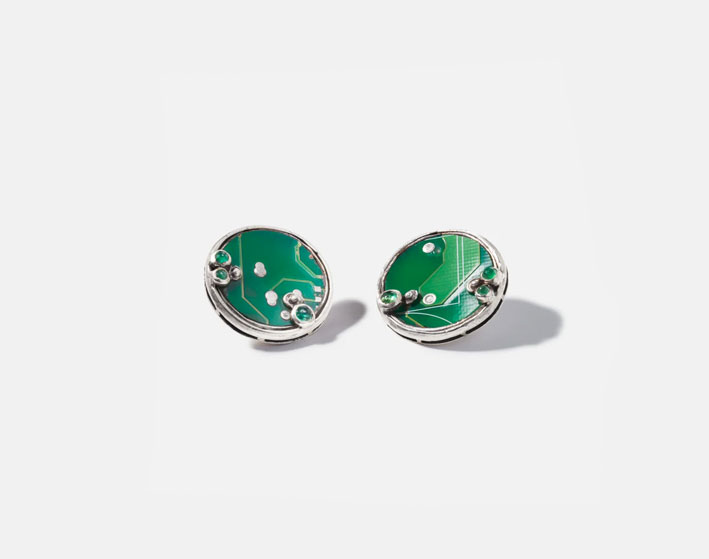
Furthermore, this kind of cultural mix is also testified by the choice of handcrafting the jewels in Sicily, a historical example of a meeting between different cultures: the Italian island was for centuries, in the distant past (from around the 1800s to over year 1000), dominated by the Arabs. A period that has left a cultural legacy on the island that still lasts. Each jewel is sold in bespoke packaging created in collaboration with London-based furniture designer Jan Hendzel Studio, using sustainable or reclaimed woods and recycled fabric and cork for the internal lining. A portion of the proceeds from each sale will be given to charity.
